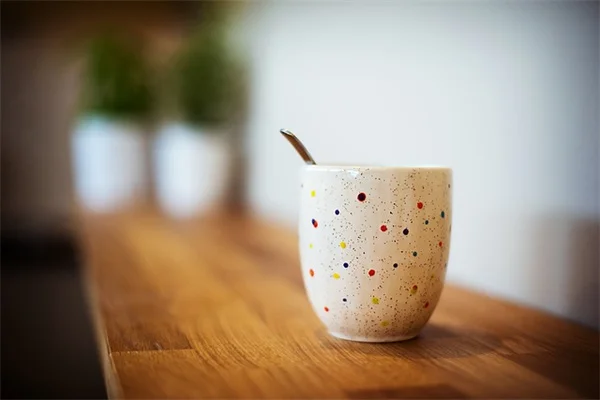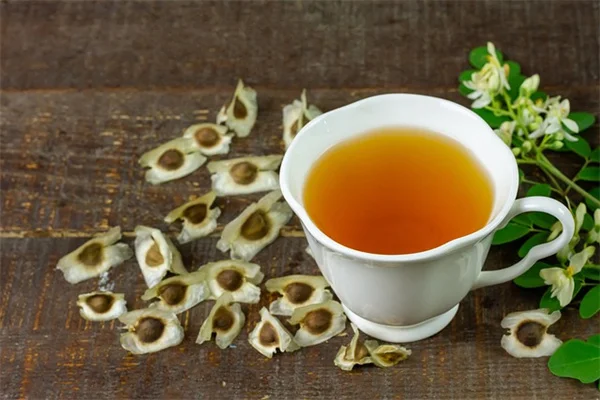Advertisement
Does climbing stairs really improve heart health? The answer is a resounding yes! New research shows that regular stair climbing can slash your risk of heart disease by 39% and lower all-cause mortality by 24%. We're talking about one of the simplest, most accessible exercises you can do - no gym membership required!As someone who's been studying cardiovascular health for years, I can tell you this: those flights of stairs you've been avoiding might be your ticket to a longer, healthier life. The study analyzed data from nearly half a million people and found that stair climbers had significantly better heart outcomes. And here's the best part - experts recommend just 3-6 flights daily to see these amazing benefits!You might be wondering - how does something as simple as taking the stairs make such a big difference? It's all about how this activity strengthens your heart muscle, improves circulation, and helps regulate blood pressure. Stick with me, and I'll show you exactly how to make stair climbing work for your health routine.
E.g. :Hormones and Rheumatoid Arthritis: What Women Need to Know About Increased Risks
- 1、Why Stair Climbing Could Be Your New Best Friend
- 2、The Science Behind Each Step
- 3、Making Stairs Part of Your Daily Routine
- 4、Overcoming Common Excuses
- 5、Creative Ways to Keep It Interesting
- 6、The Long-Term Payoff
- 7、The Hidden Perks Beyond Physical Health
- 8、Social Benefits You Never Expected
- 9、Environmental Impact of Your Choice
- 10、Adapting Stair Climbing for Different Lifestyles
- 11、Seasonal Stair Climbing Ideas
- 12、The Psychology of Habit Formation
- 13、FAQs
Why Stair Climbing Could Be Your New Best Friend
The Surprising Benefits You Never Knew
Let me tell you something - those stairs you've been avoiding? They might just add years to your life! New research shows that climbing stairs is directly linked to better heart health and a lower risk of dying from any cause. Isn't that amazing for something as simple as taking the stairs?
Dr. Sophie Paddock from the University of East Anglia noticed something interesting: "I kept seeing people - even young medical students - waiting for elevators instead of taking the stairs right next to them." This observation led to a major study analyzing data from nearly half a million people. The results? Stair climbers had 24% lower risk of death from any cause and 39% lower risk of heart disease death.
How Your Heart Says "Thank You"
Ever wonder why your heart loves stair climbing so much? Here's the inside scoop:
| Activity | Heart Benefit | Daily Recommendation |
|---|---|---|
| Stair Climbing | Strengthens heart muscle | 3-6 flights |
| Walking | Improves circulation | 30 minutes |
| Swimming | Full-body workout | 20 minutes |
Dr. John Higgins, a sports cardiologist, explains it perfectly: "When you climb stairs, your heart becomes a more efficient pump. It's like upgrading from a bicycle pump to a high-powered air compressor!" Your heart works smarter, not harder, delivering oxygen-rich blood throughout your body.
The Science Behind Each Step
 Photos provided by pixabay
Photos provided by pixabay
What Happens Inside Your Body
Let's break down the magic happening inside you with each step up those stairs:
First, your heart rate increases, giving your cardiovascular system a nice workout. This isn't just about burning calories - it's about training your heart to be more efficient. Think of it like taking your heart to the gym!
Second, your blood vessels get more flexible. Benjamin Boudreaux from Columbia University puts it this way: "Stair climbing is like yoga for your arteries. It keeps them supple and lowers your blood pressure naturally."
More Than Just Heart Health
But wait - there's more! Regular stair climbing also:
• Boosts your "good" HDL cholesterol (the bouncer that kicks out bad cholesterol)
• Helps regulate blood sugar levels
• Improves insulin sensitivity
• Reduces risk of type 2 diabetes
Now, doesn't that make you want to find the nearest staircase?
Making Stairs Part of Your Daily Routine
Simple Ways to Step Up Your Game
You don't need to live in a skyscraper to benefit from stair climbing. Here are some easy ways I've found to work more stairs into my day:
• Office life hack: Use the restroom one floor up or down
• Shopping strategy: Park on the far side of the parking garage and take the stairs
• Airport tip: Skip the moving walkways and escalators
Remember that time I got to my meeting faster than my colleagues who waited for the elevator? True story! Stairs are often the quicker option in busy buildings.
 Photos provided by pixabay
Photos provided by pixabay
What Happens Inside Your Body
While the study didn't set a magic number, most experts suggest 3-6 flights daily (that's about 30-60 steps). But here's the good news - even one flight makes a difference! As Dr. Boudreaux says, "Something is always better than nothing when it comes to movement."
A 2023 study found that climbing just five flights daily (about 50 steps) could significantly reduce cardiovascular risks. That's less than what you'd climb in a typical trip to a second-floor apartment!
Overcoming Common Excuses
"But I Don't Have Time!"
Let's be real - we've all used this excuse. But consider this: climbing stairs actually saves time in many situations. How many times have you waited longer for an elevator than it would take to walk up?
Here's my personal challenge: Next time you're tempted to take the elevator, ask yourself, "Is my health worth an extra 30 seconds?" The answer is always yes.
"It's Too Hard on My Knees"
This is a valid concern, but there are ways to make it easier:
• Take stairs one at a time
• Use the handrail for support
• Go at your own pace
• Consider descending via elevator if needed
Remember, any movement is better than none. Even slow stair climbing provides benefits!
Creative Ways to Keep It Interesting
 Photos provided by pixabay
Photos provided by pixabay
What Happens Inside Your Body
Let's face it - stairs can get boring. Here are some ways I keep it interesting:
• Count your steps and try to beat your personal best
• Listen to upbeat music or podcasts
• Challenge coworkers to stair-climbing competitions
• Use the "two at a time" method for an extra challenge
My favorite trick? I pretend I'm climbing to the top of the Empire State Building. By floor three, I'm usually laughing at myself - but I've gotten my heart rate up!
When You Don't Have Access to Stairs
No stairs at home? No problem! Try these alternatives:
• Use a sturdy step stool for step-ups
• Find local bleachers at a school or park
• Invest in a small stair stepper machine
• Use the curb outside your home for step practice
The key is to get creative. As my grandma used to say, "Where there's a will, there's a way - and usually some stairs nearby!"
The Long-Term Payoff
Investing in Your Future Self
Think of stair climbing as putting money in your health savings account. Each step is a deposit that pays dividends later in life. The research clearly shows that regular stair users have:
• Stronger hearts
• Better circulation
• Lower disease risk
• Increased longevity
Isn't that worth skipping the elevator for? Your future self will thank you when you're still climbing stairs at 80 while others struggle to walk across the room.
Small Changes, Big Results
Remember, you don't need to become a stair-climbing marathoner overnight. Start small - maybe take the stairs just once today. Tomorrow, make it twice. Before you know it, you'll be:
• Feeling more energetic
• Sleeping better
• Noticing easier breathing
• Enjoying stronger legs
As Dr. Paddock says, "We're not asking people to run marathons - just to make smarter choices about everyday movements." Those small choices add up to big health benefits over time.
The Hidden Perks Beyond Physical Health
Mental Health Boost You Can't Ignore
You know that afternoon slump when your brain feels like mush? Stair climbing might be the perfect pick-me-up that coffee can't provide. A 2022 University of Georgia study found that just 10 minutes of stair climbing provided more energy than 50mg of caffeine (that's half a cup of coffee!).
Here's why it works: When you climb stairs, your brain gets flooded with oxygen-rich blood and feel-good chemicals like endorphins. It's like giving your mind a power wash! I've personally found that taking the stairs before important meetings helps me think clearer and stay focused longer.
Stress Relief on Every Step
Ever notice how stressed people tend to pace? There's science behind that! The rhythmic motion of stair climbing can:
• Lower cortisol (the stress hormone) by up to 15%
• Increase serotonin production
• Trigger the relaxation response in your nervous system
Next time you're feeling overwhelmed, try walking up and down a few flights. You might find it more effective than deep breathing exercises!
Social Benefits You Never Expected
The Staircase Networking Effect
Here's something most people don't consider - stairs are fantastic for spontaneous conversations. Unlike elevators where everyone stares at their phones or the floor numbers, stairwells encourage more natural interactions.
I've made more work connections in stairwells than in any office kitchen! There's something about moving together that breaks down social barriers. Try saying "good morning" to someone on the stairs - you'll be surprised how often it leads to a real conversation.
Family Fitness Made Easy
Looking for a free family activity? Turn stair climbing into a game! Here's what works for my family:
| Game | How to Play | Health Benefit |
|---|---|---|
| Stair Counting | Count steps in different languages | Mental + physical workout |
| Treasure Hunt | Hide small prizes on different floors | Motivation to climb more |
| Alphabet Hunt | Find items starting with each letter | Observation skills |
Kids especially love turning stairs into an adventure. Before they know it, they've gotten their daily exercise without even realizing it!
Environmental Impact of Your Choice
Saving Energy One Step at a Time
Did you know your stair-climbing habit helps the planet? Every time you skip the elevator, you're:
• Reducing electricity consumption
• Decreasing demand on building systems
• Lowering your carbon footprint
A typical elevator uses about 0.5 kWh per trip - that adds up fast in busy buildings! Multiply that by hundreds of people choosing stairs daily, and you've got significant energy savings.
The Ripple Effect of Healthy Choices
Here's something cool - when you consistently take the stairs, people notice. Your coworkers might start joining you. Your family might get inspired. Before you know it, you've created a mini health movement!
I've seen this happen in my own office. What started as one person taking the stairs turned into a department challenge, then a company-wide wellness initiative. All because someone decided to skip the elevator one Tuesday morning.
Adapting Stair Climbing for Different Lifestyles
For Busy Parents
Think you can't fit stair climbing into your chaotic schedule? Think again! Here's how I made it work when my kids were toddlers:
• Used naptime to do step-ups on the bottom stair while monitoring the baby monitor
• Turned grocery store trips into stair workouts by taking the cart up/down ramps
• Created "stair story time" where we'd read one book page per step climbed
You'd be amazed how many steps you can accumulate just through daily parenting activities!
For Office Workers
Stuck at a desk all day? Try these sneaky strategies:
• Set a reminder to take the stairs every time you go to the restroom
• Have walking meetings on staircases (great for 1:1 conversations)
• Use your lunch break to explore different stairwells in your building
One of my clients lost 15 pounds just by making these small changes to her work routine. The best part? She didn't have to spend extra time at the gym!
Seasonal Stair Climbing Ideas
Summer Stair Adventures
Take your stair climbing outdoors when the weather's nice! Some fun options:
• Stadium steps at local schools (often open to the public)
• Outdoor staircases in parks and urban areas
• Beach access stairs (bonus: amazing views!)
I've discovered some incredible hidden gems in my city just by seeking out interesting staircases. It's like urban exploring with health benefits!
Winter Stair Solutions
When it's cold outside, get creative indoors:
• Mall walking that includes all staircases
• Apartment building stairwells (ask permission first)
• Office building stairs during lunch breaks
Remember, consistency is key. Even if you can't do your usual outdoor stairs, maintaining the habit indoors keeps you on track for better health.
The Psychology of Habit Formation
Making Stairs Your Default Choice
Ever wonder why we instinctively go for elevators? It's all about habit loops. Here's how to rewire your brain:
1. Cue: Place visual reminders near elevators (I put a sticky note that says "Take the stairs!" on my badge)
2. Routine: Start with just one stair trip per day
3. Reward: Track your flights in a fun app or notebook
Within a few weeks, you'll find yourself automatically heading for the stairs without thinking. That's the power of habit!
Overcoming Mental Barriers
Our brains love to make excuses. Here's how to counter common mental blocks:
"It's too hard" → Start with just one flight and build up gradually
"I'll look silly" → Remember, most people admire those who take stairs
"I don't have energy" → Stairs actually give you more energy in the long run
The mind always resists change at first. Push through that initial resistance, and soon stair climbing will feel completely natural.
E.g. :Here's How Many Stairs You Should Climb a Day for a Healthy Heart
FAQs
Q: How many flights of stairs should I climb daily for heart health?
A: Experts recommend climbing 3-6 flights of stairs daily for optimal heart health benefits. Each flight typically has 10-15 steps, so we're talking about 30-60 steps total. The beauty of stair climbing is that you can spread this throughout your day - maybe one flight in the morning, two at lunch, and a couple more in the evening. Even if you can only manage one flight initially, that's still better than nothing! Research shows that climbing just five flights (about 50 steps) daily can significantly reduce cardiovascular risks.
Q: Why is stair climbing better than other exercises for heart health?
A: While all exercise benefits your heart, stair climbing offers some unique advantages. First, it's a weight-bearing activity that engages multiple muscle groups while getting your heart rate up. Second, it's more intense than walking but less jarring than running. As Dr. John Higgins explains, "Stair climbing trains your heart to work more efficiently - it's like upgrading your cardiovascular system." Plus, it's incredibly accessible - you can find stairs almost anywhere, making it easier to stick with than gym routines.
Q: Can stair climbing help if I already have heart problems?
A: Absolutely, but with some precautions. The study included participants with existing heart conditions and still found benefits. However, if you have heart disease, we recommend starting slow and consulting your doctor first. Begin with just a few steps at a time, use the handrail for support, and stop if you feel dizzy or short of breath. The key is gradual progression - your heart will get stronger with consistent, moderate stair climbing.
Q: What if I don't have access to stairs at home?
A: No worries! There are plenty of creative solutions. You can use a sturdy step stool for step-ups at home, find local bleachers at a school or park, or even use the curb outside your house. Many public places like malls, offices, and airports have stairwells you can use. As Benjamin Boudreaux suggests, "Look for opportunities throughout your day - taking stairs instead of elevators in buildings is an easy way to incorporate this healthy habit."
Q: How quickly will I see benefits from stair climbing?
A: While some benefits like improved circulation and energy levels may appear within weeks, the most significant heart health improvements typically show up after several months of consistent stair climbing. Remember, this is about long-term heart health, not overnight results. That said, you'll likely notice better stamina and easier breathing within the first month if you stick with it. The key is making stair climbing a regular part of your routine rather than an occasional activity.




